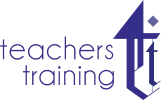Imagine a classroom where every student feels supported, challenged, and excited to learn. That’s the power of adaptive teaching, a dynamic approach that personalises instruction to cater to each student’s unique needs and learning styles.
What is Adaptive Teaching?
Adaptive teaching personalises learning to cater to each student’s unique strengths, weaknesses, and learning styles. It moves beyond the traditional “one-size-fits-all” approach, acknowledging that students progress at their own pace and require different levels of support. Adaptive teachers act as facilitators, tailoring lessons and resources to ensure all students can thrive.
Here’s a closer look at the key components of adaptive teaching:
- Proactive Planning: Adaptive teachers meticulously plan, considering students’ prior knowledge, learning styles, and potential barriers to learning, such as language or special needs. This meticulous planning informs the creation of adaptive teaching lesson plans, resource selection, and differentiation strategies.
- Real-Time Adjustments: Adaptive teachers don’t rely solely on predetermined plans. They assess student understanding through questioning, observations, and formative assessments. This allows them to adaptively adjust instruction on the fly, providing additional support or extending challenges as needed.
- Respecting Individual Learners: In an adaptive teaching environment, every student is valued for their unique strengths and contributions. Adaptive teaching fosters a growth mindset, encouraging students to embrace challenges and celebrate progress, fostering a love for learning.

What Makes Adaptive Teaching Effective?
Here’s the secret that makes adaptive teaching so powerful:
- Personalised Learning: Students are no longer passive learners in a one-size-fits-all environment. Adaptive teaching tailors instruction to each student’s individual needs, interests, and learning styles. This keeps them engaged and motivated, just like a mission that taps into their unique skills.
- Focus on Strengths: Adaptive teaching doesn’t just address weaknesses. It also helps students build upon their existing strengths. This fosters a growth mindset, encouraging students to believe in their ability to learn and improve, just like a team constantly training and honing their abilities.
- Closing the Achievement Gap: By providing targeted support and differentiated instruction, adaptive teaching helps all students reach their full potential. This narrows the achievement gap and ensures everyone has a chance to succeed.
- Deeper Understanding: Adaptive teaching encourages students to go beyond memorization and develop a deeper understanding of concepts. This promotes critical thinking skills and prepares them for future challenges.
- Increased Student Engagement: When learning is relevant and personalised, students are naturally more interested and engaged. This improves classroom focus and participation, making learning an engaging adventure!
Why is Adaptive Teaching Important?
There are many benefits to adaptive teaching:
- Feels Great for Everyone: Students feel supported and motivated because they’re learning things that interest them at the right pace. Teachers feel good because they’re helping all their students grow.
- No Student Left Behind: Adaptive teaching helps students who need extra help and also challenges those who learn quickly. This closes the gap between students and makes sure everyone has a chance to succeed.
Learning Becomes Fun: When lessons are interesting and relevant, students are more engaged. Adaptive teaching makes learning an adventure.
How Can Teachers Use Adaptive Teaching?
There are many ways to make teaching more adaptive:
- Flexible seating: Some students learn best sitting at desks, while others prefer beanbags or standing desks. Adaptive classrooms offer choices so everyone can learn comfortably.
- Learning Through Games: Games can make learning fun and engaging. Adaptive teachers can use games to help students practise skills and learn new things.
- Working Together: Students learn from each other by working in groups. Adaptive teaching encourages teamwork and helps students develop important social skills.
- Constant Check-Ins: Quick quizzes and questions help teachers see if students understand the material. Adaptive teaching allows teachers to adjust their lessons based on what students need.
Challenges and Considerations
Even though it’s great, adaptive teaching isn’t always easy:
- Lots of Needs: Teachers need to juggle the needs of many students at once. It takes practice and organisation to make sure everyone gets the help they need.
- Change Takes Time: Switching to adaptive teaching might require changes to the classroom or how lessons are planned. This takes time and effort, but the results are worth it!
The Future of Adaptive Teaching
As the educational landscape evolves, adaptive teaching is poised to play a central role in unlocking the potential of every learner. Here’s why:
- Technology Integration: Educational technology offers exciting possibilities for adaptive teaching. Imagine programs that adjust difficulty levels based on student performance, or online resources that cater to individual learning styles. By strategically integrating technology, teachers can personalise learning journeys in ways never before possible.
- Data-Driven Decisions: Adaptive teaching thrives on data. Through formative assessments, observations, and student feedback, teachers can gather valuable information about student progress. This data allows teachers to tailor instruction and identify areas where students might need additional support or enrichment activities.
- Focus on Collaboration: Adaptive teaching isn’t a solo endeavour. Collaboration among teachers, specialists, and parents is crucial for its success. By sharing resources, best practices, and student data, educators can create a comprehensive support system that caters to diverse student needs.
Empowering All Learners
The true power of adaptive teaching lies in its ability to empower all learners:
- Students with Learning Differences: Adaptive teaching helps identify and address learning challenges early on. This allows for targeted interventions and differentiated instruction, ensuring students with learning differences can access the curriculum and thrive in the classroom.
- Advanced Learners: Adaptive teaching doesn’t stop at remediation. It also provides opportunities for advanced learners to dive deeper into concepts and explore their interests. This fosters intellectual curiosity and a love for lifelong learning.
Challenges and Overcoming Them
While the benefits of adaptive teaching are undeniable, implementing it effectively requires addressing some challenges:
- Professional Development: Teachers need ongoing training and support to develop their adaptive teaching skills. Investment in professional development opportunities is crucial for successful implementation.
- Resource Allocation: Personalised learning often requires a variety of resources, from differentiated materials to technology integration. Schools need to allocate adequate resources to support adaptive teaching practices.
- Shifting Mindsets: Transitioning from traditional teaching methods to a more adaptive approach takes time and a willingness to embrace change. Open communication and collaboration among educators can help navigate this shift effectively.
Conclusion
Adaptive teaching offers a transformative approach to education, empowering educators to create vibrant and inclusive learning environments where every student feels supported and challenged. By harnessing technology, data, and collaboration, we can unlock the full potential of adaptive teaching and ensure all learners thrive in the classroom of the future.





